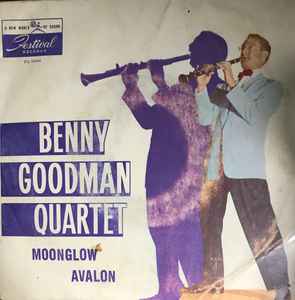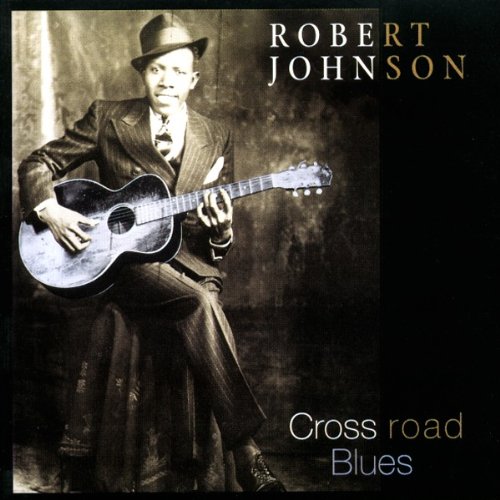 There’s a moment, somewhere between the opening riff and the explosive horn chorus of “In the Mood,” where time folds into itself. Whether it’s 1939 or 2025, whether you’re hearing it on a dusty 78, a crackling jukebox, or in a film montage of soldiers marching off to war, Glenn Miller’s magnum opus reaches into the bloodstream. It’s pure swing—unapologetically confident, undeniably rhythmic, and universally recognizable. More than a song, “In the Mood” became a cultural force, defining a generation and its ethos while embodying the musical spirit that helped America dance through its darkest hours.
There’s a moment, somewhere between the opening riff and the explosive horn chorus of “In the Mood,” where time folds into itself. Whether it’s 1939 or 2025, whether you’re hearing it on a dusty 78, a crackling jukebox, or in a film montage of soldiers marching off to war, Glenn Miller’s magnum opus reaches into the bloodstream. It’s pure swing—unapologetically confident, undeniably rhythmic, and universally recognizable. More than a song, “In the Mood” became a cultural force, defining a generation and its ethos while embodying the musical spirit that helped America dance through its darkest hours.
Few instrumental pieces in American popular music have achieved the same level of cultural permanence as “In the Mood.” With its iconic melody, shifting dynamics, and shout chorus finale, the song is instantly familiar even to those who know little of the big band era. At the heart of its success lies Glenn Miller, a bandleader whose tight arrangements, sharp suits, and keen sense of what the public craved transformed a simple swing tune into an anthem of the World War II generation. “In the Mood” is a war cry in a tuxedo, a musical time capsule echoing with the swing of hips and the march of boots.
Long before Glenn Miller made the song his own, “In the Mood” had a winding history. The roots of the melody can be traced to a 1930 composition by Wingy Manone, titled “Tar Paper Stomp.” Manone’s piece featured the now-familiar riff, though without the fully developed structure Miller would eventually solidify. Other bandleaders, like Joe Garland and Edgar Hayes, began tinkering with the idea, crafting early versions that danced around the rhythmic motif but never quite landed the punch. Garland, a talented saxophonist and arranger, expanded on the riff-based concept and brought it to Artie Shaw, who passed on it. Eventually, it found its way into Glenn Miller’s hands.
Miller didn’t just play “In the Mood.” He overhauled it. He shaped it into a razor-sharp, tension-filled dance piece that built like a wave and crashed in a thunderclap of brass and woodwind fury. The arrangement, as recorded by the Glenn Miller Orchestra in 1939 for RCA Bluebird Records, made significant alterations to Garland’s earlier version. Miller streamlined the structure, amped up the swing, and delivered one of the most effective uses of a fade-and-climax in big band history. It’s a masterclass in orchestration, one that demonstrates Miller’s genius as an arranger just as much as his skill as a bandleader.
Central to the song’s appeal is its unforgettable opening riff, a sauntering saxophone motif that dances forward with syncopated swagger. That riff, once heard, never quite leaves the mind. It’s more than a hook—it’s a signature. Then, after the brass echoes and the rhythm section steadies its pace, the full band launches into the melody, with call-and-response sections that build suspense through each pass. Perhaps the most ingenious part of the arrangement is the famous false ending—a sudden drop in volume and intensity, where the saxes whisper the riff as if winding down—before the entire band explodes back into a full-throttle climax. It’s dramatic, theatrical, and wildly effective.
At the time of its release, “In the Mood” struck a nation poised on the edge of war. The Great Depression had begun to lift, and America’s youth were reclaiming optimism through movement—on dance floors, in ballrooms, at soda shops. Swing music, with its high energy and communal feel, provided the perfect soundtrack for this resurgence of hope. And no one captured that atmosphere better than Glenn Miller.
With “In the Mood,” Miller became more than a bandleader—he became a symbol of American sophistication and resolve. His orchestra was the tightest in the business, known for precision and polish. Miller’s commitment to discipline was evident in his performances; everything was meticulously rehearsed, nothing left to chance. While some critics accused him of being too slick, too sanitized, the public disagreed. They didn’t want chaos—they wanted class. And Miller gave it to them, note for note.
As the 1940s dawned and the United States entered World War II, “In the Mood” transitioned from nightclub favorite to morale-booster on the front lines. It was broadcast by the Armed Forces Radio Service, played at USO dances, and even performed live by Miller himself after he enlisted in the Army Air Forces in 1942. He was commissioned as a captain and eventually formed the Army Air Force Band, which toured bases and broadcast swing music to troops across Europe.
Miller understood that music had power beyond entertainment. In wartime, swing music wasn’t just a diversion—it was psychological armor. For soldiers facing the horrors of combat, hearing “In the Mood” was a reminder of home, of girlfriends waiting patiently, of jitterbug nights under the stars. The driving rhythm and cheerful tone became synonymous with resilience. It was no accident that Miller insisted on high-quality arrangements and refused to water down the music, even for military purposes. He believed the troops deserved the best.
Tragically, Glenn Miller would not return home. On December 15, 1944, the plane carrying him across the English Channel disappeared and was never found. He was declared missing in action, and his death remains one of the enduring mysteries of World War II. But his legacy endured—and no piece of music better captured that legacy than “In the Mood.”
In the years following the war, “In the Mood” became enshrined in American musical history. It continued to appear in film, television, and advertising, a shorthand for both the swing era and the wartime experience. Whether in The Glenn Miller Story (1954) starring James Stewart or in archival footage of USO shows, the song remained a touchstone. It was even inducted into the Grammy Hall of Fame in 1983 and remains a staple of swing revival bands and jazz education programs around the world.
What makes the song so enduring? Part of the answer lies in its pure musical craftsmanship. Every element of the arrangement is working toward an emotional crescendo. There’s the flirtatiousness of the sax riff, the layered interplay between horns and rhythm, the calculated restraint of the “false ending,” and the glorious release of the final shout chorus. It’s music designed not just to be heard, but to be felt.
And then there’s the historical weight. “In the Mood” is one of those rare pieces that transcends its medium. It is both soundtrack and symbol, both entertainment and artifact. It carries the echoes of swing dancers at the Savoy Ballroom and of GIs gathered around a camp radio. It belongs to a moment when music was the heartbeat of the nation, when a tune could rally spirits, move bodies, and say everything that couldn’t be said in words.
Yet for all its grand associations, “In the Mood” never loses its simple joy. That’s perhaps the secret to its immortality—it’s not just important, it’s fun. The melody swings with purpose but never pretense. The rhythms are tight but never mechanical. It’s music that respects the intelligence of the listener while still inviting everyone to the party. It captures a time when Americans needed both strength and escape, when dancing wasn’t frivolous but necessary.
Modern generations may know “In the Mood” from school band concerts, Ken Burns documentaries, or classic film soundtracks. But wherever and however it’s heard, the effect is the same. Heads nod, feet tap, and somewhere, a smile spreads across a face. There’s something undeniably infectious about it. It doesn’t matter if you’re a jazz purist or a casual listener—when the horns kick in, resistance is futile.
It’s tempting to view “In the Mood” as a relic, a charming ghost from a sepia-toned past. But that would miss the point. The song is very much alive, still swinging, still sizzling with energy and elegance. Its DNA can be traced in the work of countless artists who followed—from the horn-driven soul of James Brown and the funk grooves of Earth, Wind & Fire to the brass blasts in modern pop and hip-hop arrangements. Any time a band punches up a section for impact, they’re following the blueprint Miller helped write.
“In the Mood” is not just Glenn Miller’s greatest triumph—it is one of American music’s great achievements. Its story is one of collaboration, of artistic vision, and of perfect timing. It didn’t emerge fully formed from a single mind, but rather evolved through the contributions of several musicians, finally crystallized by Miller’s guiding hand. In doing so, it became more than a hit. It became the sound of swing.
There are songs that make you dance. There are songs that make you remember. “In the Mood” does both. It lifts the heart while anchoring the memory, reminding us of a time when brass bands ruled the airwaves, when swing rhythms were a lifeline, and when one man with a trombone and a vision could bring a whole nation to its feet.
And as long as there are dance floors and drum kits, jitterbuggers and dreamers, that saxophone riff will keep sauntering in, beckoning us to smile, sway, and swing—always in the mood.


